![]()
(Reproduction of the text below is authorized provided the holder is preserved and mentioned - All rights reserved - PY4SM - PY2DD)
|
Physicist, mathematician and astronomer Italian, Galileo Galilei (1564-1642) discovered the law of bodies and enunciated the principle of inertia. It was close that Galileo did not follow his artistic career. His master Don Orazio Morandi, tried to stimulate it from the coincidence of dates with Michelangelo (who had died three days after birth). His father wanted to be a doctor. To meet the wishes of his father, he arrived at the port of Pisa. But proved to be a bad student ... just thought about doing "physics experiments" (at the time, physics was considered a dreamy science). Aristotle was the only respected discoverer and that he had discovered something about physics, no one challenged ... until you see Galileo. |
It was Galileo who discovered how to make the hydrostatic balance which would result in the grandfather clock. From a piece of paper built the first astronomical telescope in Venice. He made observations of the Via Lactea from 1610 and adopted the Copernican system. Pressed by the church, he went to Florence, where he studied, researched and concluded that the Planetarium Center was the Sun and not the Earth ... and that revolved around him like all the planets. It was condemned by the Inquisition and had to deny everything in court. He brought up for discussion many ideas of the Greek philosopher Aristotle; among them the fact that heavy bodies fall faster than light (with the well-known story that had risen in the Pisa tower and released two high objects). This story was never confirmed, but Galileo proved that heavy and light objects fall at the same speed. On leaving the court, said the famous phrase: "EPUR you Muove! "This means “though it moves". He died blind and condemned by the church, away from the public conviviality. 341 years after his death in 1983, the same church, reviewing the process, decided for acquittal.
In Europe, there are more than 400 years; life was very different from today. There were no factories or industries. Most people working in agriculture. The rest were artisans in pottery and carpentry. Few children go to school and even fewer could read and write. Books were rare and very expensive, often written in Latin, the tongue of the wise and the Church. The science, the way we understand it today, was almost unknown. It was in this world that Galileo was born on February 15, 1564 in Pisa in northwest Italy. He had two sisters and a brother. His father, Vincenzo Galilei, was a professor of music. The family was not rich, but Galileo had a private tutor in his youth, once shown to be a good student and eager to learn. His family moved to Florence in 1574 and he was educated by monks of the Camaldolese monastery in nearby Vallombrosa.
In 1581, aged just 17, Galileo began studying medicine at the University of Pisa. The Italian city of Pisa, in Tuscany was previously home to an independent city state, with a large naval fleet, it was conquered by Florence in the fifteenth century. Galileo fed a vague idea of being a doctor, but his interest in medicine never evolved. It is said that, on a certain day that year, in the cathedral of Pisa, Galileo looked for a chandelier that hung from the ceiling by a chain long. Marking time of oscillation using the wrist like "clock", he noted that the chandelier swayed in the large open space of the building. No matter if the chandelier or only very slightly oscillated, it employed the same time to complete the movement from one side to the other. This observation did not agree with what Galileo expected. He later attended a geometry class at the University. From there, he aroused his interest in science. From 1583, he was brought up by a family friend, Ostilio Ricci, who lived in Pisa and was a professor at the court of Duke of Tuscany. His worst enemy was his own temperament, always contradictory. As time and circumstances, Galileo knew to show up cheerful and communicative, friend of the good things of life. It was described as a person able to enjoy a good literary discussion, a meal prepared with refinement and a beautiful female company. Even his scientific correspondence with the disciple Benedetto Castelli contains humorous remarks about the cheese and wine barrels that they sent each other.
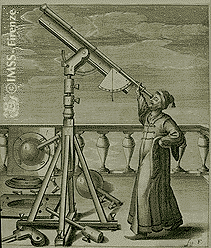 |
Galileo never married, but had sufficient love affairs: he had three sons (two daughters and one son) - one of his daughters lived with him until his death. But Galileo's personality had a dark side: he entered in scientific controversies, was sarcastic, brutal, a misplaced pride. He spent a lot of energy attacking alleged rivals. Galileo Galilei was a pivotal figure in the development of modern astronomy, both because of their direct contributions to astronomy as for his work in physics and its relationship with astronomy. He provided the crucial observations that proved the Copernican hypothesis, and still left the foundations for a correct interpretation of how objects moved on earth (dynamics) and of gravity.Newton was born in the year that Galileo died would continue the ideas of Galileo demonstrating that the laws of motion in the heavens and the laws of motion on earth were one and the same. Thus, Galileo began and Newton completed a synthesis of astronomy and physics in which the first was a particular case of the second, thus banishing the notions of Aristotle almost completely from both. |
It can be seen, with considerable justification, view Galileo as the father of modern astronomy and physics. Galileo was born at the end of the sixteenth century, a time of great religious conflicts in Europe, great expeditions of naturalists and time of the great navigations. For these navigations occur, it was crucial to the development of many techniques that facilitate, thus being possible to make long journeys. As in the fifteenth century European countries felt bothered by the Italian monopoly of eastern spices, needed more precious metals and had the bourgeoisie and its allies kings by the national monarchies, the sailings were very likely to occur , but lacked the previously mentioned development technical and scientific . This ended up occurring as a result of the Cultural Renaissance, where man and the reason they were valued in a new anthropocentric worldview.
This new thinking was favored by the weakening of the Church, which was due to the decline of feudalism, since the Church was strongly associated with this system, printing people the God-centered thinking and with the Reformation, which was the creation of a segment religious members from within the Catholic Church. As the power of the Church on religious mentality of the people has been declining, he was lost excessive fear deviate from the Church's commandments. Researchers now say that all that existed had an intelligible cause and began to research these causes noting that often the relation of these facts to God was wrong. For example, the earthquakes that took place in the Church as a result of God's wrath were really only trembling of the earth occurred by a movement of tectonic plates within the earth. In this same line of thought were the great technical and scientific progresses which eventually help in very navigations through the development of various instruments and navigation techniques.
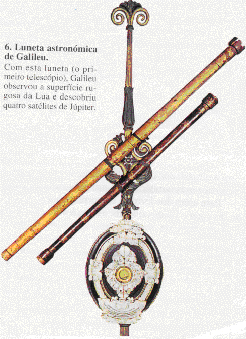
When Galileo was only 17 years old he stood for hours watching a lamp swinging in the cathedral of Pisa. Taking as a measure of its own pulse time, Galileo noted that the lamp fluctuations or larger or smaller, had the same length. This observation led him to study the pendulum and their work resulted in the isochronism law. When he returned to delve into the study of mathematics and physics, Galileo developed a small hydrostatic balance. Around this time, Galileo adopted the experimental method and made some important theorems. In 1589, Galileo was invited to teach mathematics at the University of Pisa. At that time, Galileo made one of his most famous experiments. From the top of the Leaning Tower dropped two balls of different weights at the same time. Galileo noted that the ball hit the ground at the same time. It was believed that heavier objects fell faster. Galileo turns an optical telescope on one of his trips. How not know much about optics, he began to study to build an acceptable scope.
He was the first to observe the mountains of the moon and also the spots of the Sun; It found that Jupiter had satellites that revolved around that Venus seemed to change so that the Via Lactea was the light emitted by a huge number of distant stars. All he saw and concluded confirmed what Copernicus had said earlier. Galileo was afraid that his work was not accepted by the Church, because it reduced their authority. Their findings also challenged leading scientists and even the largest Galileo's admirers distrusted him. When he was appointed a member of one of the most important scientists of Church councils, we are encouraged to disclose his work. Galileo tried, first, joining his theories to the Holy Scriptures, but failed. As his works were in Italian, not in Latin - as was imposed - Galileo would be sentenced to prison if publish any more of his works. The Italian was very accessible to the people, which could weaken the power in Rome. After a few years, on June 22, 1635, Galileo denied his work, on his knees, to save him from death before the Holy Office.
Physicist, mathematician and Italian astronomer Galileo Galilei (1564-1642) discovered the law of bodies and enunciated the principle of inertia. By little Galileo did not follow his artistic career. One of his first teachers, d. Orazio Morandi, tried to stimulate it from the coincidence of dates with Michelangelo (who had died three days after birth). His father wanted to be a doctor, and then landed at the port of Pisa to pursue that profession. But it was a bad student and only thought about doing physical experiments (which at the time was considered one of dreamer’s sciences). Aristotle was the one who had discovered something about physics, no one challenged repeatedly until Galileo. It was then that discovered how to make the hydrostatic balance, which would result in the grandfather clock. From a leaflet built the first astronomical telescope in Venice. He made several observations of the Via Lactea from 1610 that led him to adopt the Copernican system. Pressed by the church, he went to Florence, where he completed his studies with the Planetarium Center was the Sun and not the Earth that revolved around him like all the planets. It was condemned by the Inquisition and had to deny everything in court. He brought up for discussion many Greek philosopher Aristotle's ideas, including the fact that heavy bodies fall faster than light ones, with the famous story that had risen in the Pisa tower and released two high objects. This story was never confirmed, but Galileo proved that heavy and light objects fall at the same speed. On leaving the court, said a famous saying: "And you Muove" translating, "and everything it moves." He died blind and condemned by the church, away from the public conviviality. 341 years after his death in 1983, the same church, reviewing the process, decided for acquittal.
Its main achievements:
The Lunette Astronomical, with which found, among other things, the Mountains
of the Moon, the satellites of Jupiter, sunspots, and especially the planets
not yet known;
The hydrostatic balance;
The geometrical and military compass;
It was the first to challenge the ideas of
Aristotle;
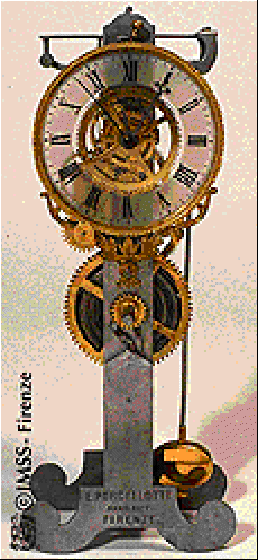
Italian physicist and astronomer who along with the German astronomer Johannes Kepler, began the scientific revolution that culminated with the work of English physicist Isaac Newton. His main contribution to astronomy was the use of the telescope for the observation of sunspots, lunar mountains and valleys, the four largest satellites of Jupiter and the phases of Venus. In physics, he discovered the laws governing falling bodies and the motion of projectiles. In his treatise entitled Dialogue on maximum systems (1632), defended the Copernican theory according to which the earth revolves around the sun. Galileo was summoned to Rome by the Inquisition, which accused him of "grave suspicion of heresy". Finally, he was forced to recant in 1633 and sentenced to life imprisonment, which sentence was reduced to house arrest. The last work of Galileo, speeches and mathematical demonstrations on two new sciences, published in Leiden in 1638, reviews and refines his first studies on the movement and the principles of mechanics in general. This book opened the path that led Newton to formulate the law of universal gravitation. Galileo symbolizes the defense of scientific research without philosophical and theological interference.
Pope John Paul II opened in 1979 an investigation into the ecclesiastical condemnation of the astronomer and in October 1992 was the Vatican error recognized. Over the past two decades, scholars have produced much new material on the use of trial by Galileo. There follows discussion on particular points, but today you can at least assume, without fear, he planned and carried out experiments in the course of various investigations. No doubt, some basic questions remain standing: When he started the practice? How it was mature or developed its experimental sense when you started? The fact that did not invent the art of experiment is something that seems clear given that his father, Vincenzo Galilei, before him, has performed as a musician and music theorist, interesting experiments in musical acoustics of the ground during the penultimate decade of the sixteenth century, when the young Galileo was about 20 years. So Vicenzo had proposed to solve a musical contest, which led him to investigate the proportions between lengths, tensions and "weights" of the strings of musical instruments, and the resulting sounds. It turned out to dismiss all arguments based on judgments priority over the primacy of ratios of small natural numbers and devised rules for numerical reasons, based on empirical evidence.
Under the tutelage of Vincenzo, Galileo himself played very well the lute and devoted himself to extend his father's experimental work and improve their theories. To our misfortune, Galileo did not describe their results until much later, in the Discourses, so it is difficult to assess the order of your ideas or experiments and the line or lines that followed. We are best located on the other hand, with respect to the work Galileo about natural movement. There are many texts dated from his manuscript around 1590 - Motu, through correspondence, notes and publications from the beginning of the century, to the Dialogue and the Discourses of the fourth decade. These documents begin to give us a Galileo image as a researcher, image in which right temporal movement replacing Tables plans and places that only reaffirmed the positive achievements end of Galileo. In this new image we see Galileo from certain basic assumptions and practices, changing his mind, using experimentation to criticize and revise the theory, using the theory to criticize and revise the experiment, deciding, floating, getting into dead ends output, etc.; precisely what would be expected of a person with his penetrating intelligence actively working for more than 50 years, even after blind.
The Telescope
Galileo did not invent the telescope, but he was the first to use it to study the heavens systematically. Its small telescope was worse than a cheap telescope current amateur, but what he observed in the heavens rocked the foundations of the great Aristotelian universe and the theological-philosophical vision he supported. What Galileo is said saw was so disturbing for some church officials that they simply refused to even look through the telescope; they said that the Devil was able to bring up anything on the telescope, and therefore it was better not to look for him.


Galileo observed the sun through the telescope and saw that the sun had dark spots that we call sunspots (he eventually went blind, perhaps for damage caused by looking at the sun with your telescope). Furthermore, he noted the movement of these points indicating that the sun rotated about an axis. These "anomalies" in the Sun were contrary to the doctrine of the existence of a perfect and unchangeable substance which was celestial objects, and the rotation of the sun became less strange the idea that the earth also rotated about an axis; requirement of the Copernican model. Both constitute new facts unknown to Aristotle and Ptolemy.
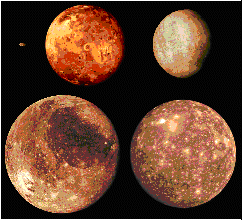
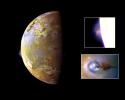
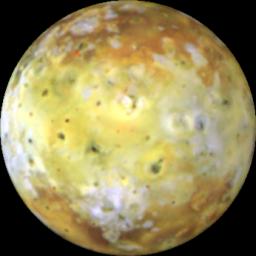
Jupiter ( Zeus, Jove ) - was considered the God of Gods , supreme authority of Olympus and also the patron of Rome. It was Saturn's son, who was the son of Uranus and probably got its name because it is the largest of the planets in the Solar System. Jupiter is the fifth planet of the solar system and the first of four gas giants. It is the largest planet and the most massive. It has 1,300 times the size of Earth and 2.5 times the mass of the eight other planets combined. His clouds are mainly composed of hydrogen and helium gas. The nearly 1,000 km deep, the hydrogen becomes liquid. Toward the bottom, hydrogen is metallic. In the center is a rocky core, very hot, where the temperature reaches about 35 000 degrees.

| DISCOVERED IN | 1.610 |
| PATHFINDER | Galileo Galilei |
| LOCATION | Fifth Planet |
| COMPOSITION | Gas and Rock |
| DIAMETER | 142.880 Km |
| SUN MIDDLE DISTANCE | 772.000.000 Km |
| EARTH MIDDLE DISTANCE | 1.197.000.000 Km |
| SATELLITES | 16 |
| ORBITAL SPEED | 13,06 Km/s |
| MASS (relative to Earths) | 317,94 |
| GRAVITY | 2,34 |
| DENSITY (relative to Water) | 1,3 |
| TEMPERATURE | -150º C |
| DAY LONG | 9h 50m |
| YEAR LONG | 12 Years land |
| TILT ROTATION SHAFT | 3,1º |
| ATMOSPHERE | Hydrogen
90% Helio 10% Methane 0,7%
|
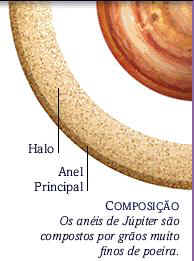
The Jupiter rotation ( as all giant gas ) is very rapid and is complete in less than 10 hours. This rotation produces cloud bands (zones and belts) at the top of the atmosphere, which run parallel to the equator. The meteorological disturbances, appearing as spots and oval layers may last for months or years. The Great Red Spot was first observed for over 300 years.
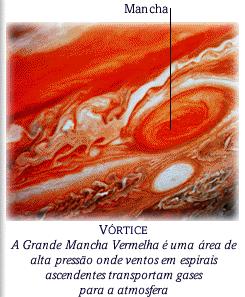
The Red Spot is a huge anticyclone region - a storm - on top of Jupiter's clouds. The diameter of this spot is three times larger than Earth. Its red and pink can be caused by high phosphorus by gas streams swirling in the lower atmosphere of earth. La Mancha has a colder temperature than the surrounding area. Jupiter completes a rotation in the counterclockwise direction by approximately 12 days ground.
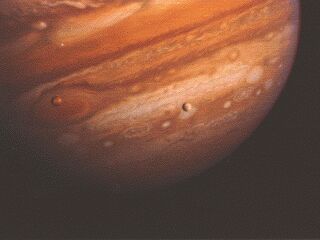

3 Jupiter's rings were discovered in 1979 by Voyager I. Their names are: Halo (circular shape and has 22,800 km wide); Main ring (narrow and bright, with only 6400 km wide); Gossamer ring (the less dense and wider, with 85,000 km).
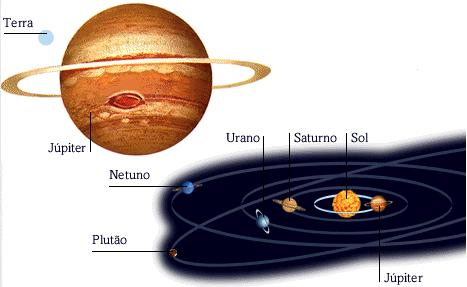
Jupiter has the largest diameter and the greatest mass of the planets in the Solar System. The Earth would fit 11 times in the equatorial diameter of Jupiter. Its speed is faster than that of other planets and its smaller rotation period than the half of the Earth's rotational period.
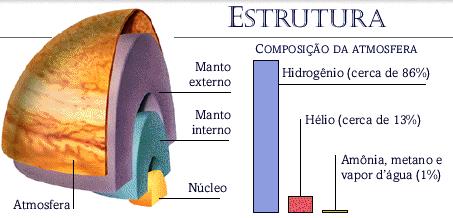
Jupiter's Moons
Galileo observed 4 points of light that changed positions with time around the planet Jupiter. He concluded that these were objects in orbit around Jupiter. In fact, these were the 4 brightest moons of Jupiter, which are now commonly called the Galilean moons (Galileo himself called them Medicea Siderea- "Medicinal Stars"). These observations showed once again that there were new things in the heavens that Aristotle and Ptolemy completely unaware. Furthermore, they demonstrated that a planet could have moons around it without would not be left behind as the planet moved in its orbit. One of the arguments against the Copernican system (and the original heliocentric idea of Aristarchus) was that the moon was in orbit around the Earth and the Earth was orbiting around the Sun, the Earth would leave the Moon behind as if He was moving in its orbit.
IOIo - was a virgin loved by Jupiter and hated by Hera. Hera turned her into a heifer. IO is a satellite. Io has active volcanoes. It was the discovery that scientists least expected. It was the first time he saw active volcanoes without being on Earth. The Voyagers observed nine volcanoes erupting. Volcanoes threw the sparks to more than 300 Km of height and the materials ejected by volcanoes came to reach 1 km / s. It is composed primarily of rock and a little iron. Io also has auroras. The satellite acts as an electric generator when it passes by Jupiter's magnetic field creating 400,000 volts and amperes 3,000,000.
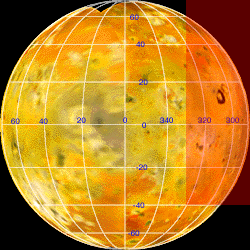
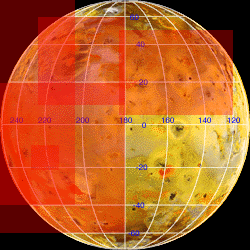
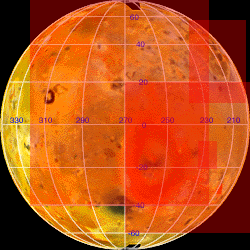
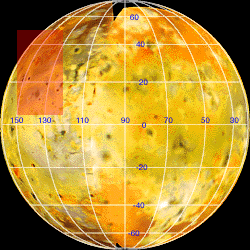
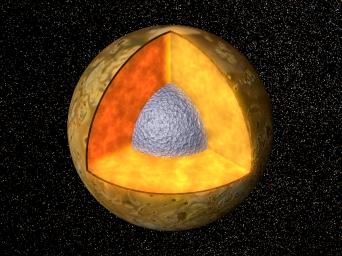

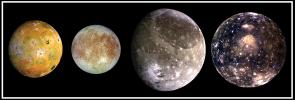
Calisto - it was a nymph loved by Zeus and hated by Hera. The jealous Hera changed her into a bear and Zeus then placed her in the sky as the constellation Ursa Major. Calisto is the third largest satellite in the solar system , about the size of Mercury . Calisto orbits around Jupiter, very close to the rings, and because of that has many craters. Calisto is the most heavily cratered satellite. It has a density of 1.86 g / cm³. It is less dense satellite between Galileo discovered. It consists of 50 % water or ice and 50% rock. Not discovered atmosphere on Calisto.
Europe
Europe - was a princess brought to Crete by Zeus, who had assumed the form of a white bull, and, along with Zeus was the mother of Minos. Europe is a moon with a strange aspect. It looks like it was painted with felt pens. Practically are not craters. It is possible that the satellite has internal activity. It has an outer layer thickness of 5 km ice water and under another layer is 50 km or more liquid water. Streaks on the surface may have resulted from the expansion, opening cracks in the ice sheet.
Ganymede
Ganymede - was a Trojan boy of great beauty, whom Jupiter took to serve winw to the Gods. Ganymede is the largest moon in the solar system with a diameter of 5,26Km. Its has a core of rock as Calisto and a crust with water and rock. It has no known atmospere, but recently the Hubble Space Telescope detected ozone on Ganymede. It has craters, mountains and riveres of lava.
Metis - It was a Titan, the first Jupiter woman.
Adrasteia - Distributor of rewards and punishments was the daughter of Jupiter and Ananke.
Amalthea - It was a nymph who won the infant Jupiter with goat´s milk.
Tebe - It was a nymph, god daughter of Asopus Rivers.
Leda - Queen of Sparta and the mother of Helen and Pollux, sons of Zeus in the form of swan.
Himalia - was a nymph who took care of three sons of Zeus (Jupiter).
Lisiteia - was the daughter of Oceanus and one of Zeus´s lovers.
Elara - was the mother and the father of Zeus
Titius giant.
Ananke - was the mother of Adrastea and his father was Jupiter.
Carme - was the mother and Zeus, the father of Britomartis, a Cretan god.
Parsífae - was the wife of Minos and mother, next to a white bull, of the
Minotaur.
Sinope - was women who say they have been successful in their attempt to Zeus.
Jupiter has been known since prehistoric times. In 1610, Galileo discovered
four of its satellites: Io, Europa, Ganymede and Calisto, and this was one of
the things that led him to believe the heliocentric theory of Copernicus - the
planets did not revolve around the earth but around the sun On openly defend
this theory, he died condemned by the Church and blind. Later these moons were
named Galilean in his honor. Jupiter was first visited by Pioneer 10
spacecraft in 1973, and soon after by Pioneer 11, Voyager 1 and 2 and finally
Ulysses. Jupiter is the first of Gaseous Planets. It is also the largest
planet in the solar system: its mass is twice higher than that of all the
other planets combined, and 318 times greater than Earth's. Jupiter is formed
of about 90% hydrogen and 10% helium with traces of other substances. This
composition is similar to the nebula from which the Solar System originated.
Saturn has a similar composition; but Uranus and Neptune are completely
different. Little is known about the gas planets, but astronomers believe that
the core of Jupiter (and the other gas planets) is rocky, with mass around
10-15 times larger than Earth. Jupiter and the other gas planets all have fast
winds; which usually cause storms such as the Great Red Spot. The colors of
the clouds correlate with their altitude: the lowest are blue; brown and white
intermediate; and red are the highest. Jupiter radiates more energy into space
than it receives from the Sun (its core should have about 20,000 K). This led
astronomers to believe that were it not for the sun, Jupiter could have turned
into a star.
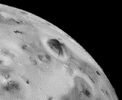
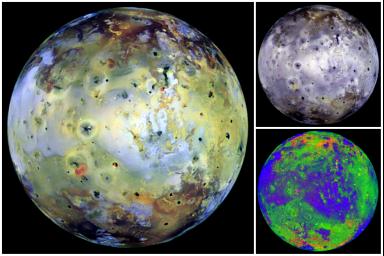
Galileo used his telescope to show that Venus went through a full set of phases like the moon. This observation was among the most important in human history, for it provided the first conclusive observational proof that was consistent with the Copernican system but not in the system Ptolemaic. The crucial point is the empirical fact that Venus is never very far from the Sun in our sky. As well as the following diagram shows, the Ptolemaic system Venus should always be in ascending phase seen from Earth because as it moves in its epicycle it can never be away from the direction of the sun (which is in front of him), but the system Copernicus, Venus should exhibit a complete set of phases as a function of time, as seen from Earth because it is illuminated from the center of its orbit. It is important to stress that this is the first empirical evidence (obtained nearly a century after Copernicus) that allowed definitely test both models. So far both models explained the available data. The first attraction for the Copernican model was that this explained the data in a more simple way, but here finally was conclusive evidence that the Ptolemaic model of the universe was not only more complicated as it was also incorrect. Galileo made many observations that undermined the authority on which the Ptolemaic model had been built. Some of these included:
1. Showing that the planets were disks, not points of light, as seen through the telescope.
2. Showing that the great "cloud " called the Via Lactea (which we now know to be the disk of our spiral galaxy ) was composed of enormous numbers of stars that had never been seen before.
3. Observations that the planet Saturn had "ears". Today we know that Galileo was observing the rings of Saturn, but his telescope was not good enough to show you more than extensions of each side of the planet.
4. Showing that the Moon was not smooth, as had been assumed, but was covered mountains and craters.
Every new discovery observed, growing doubts about the notion that there was nothing new in the heavens to be noticed because they were made of a perfect and unchangeable substance. This also raised a credibility problem: could rely on the authority of Aristotle and Ptolemy regarding the nature of the Universe if there were so many things in the universe those they completely unaware?
Galileo has made great contributions to our knowledge of the laws that govern the motion of objects. The famous experiment of Pisa Tower may not be authentic. It is likely that Galileo himself did not drop two very different weight objects from the tower at the same time to prove that (contrary to expectations) they would hit the ground at the same time. However, it is certain that Galileo understood the principle involved, and probably held similar experiences. The realization that, as we say in modern terms, the acceleration due to gravity is independent of the weight of an object is important in the formulation of the theory of Newton's gravitation. Here is an animation experiments with inclined planes that Galileo probably conducted to confirm these ideas.
The inertia
Perhaps the biggest Galileo's contribution to physics was his formulation of the concept of inertia: An object in a state of motion has an "inertia" that forces him to remain in that state of motion unless acted upon by an outside force. In reaching this conclusion very important, which will become the First Movement of Newton's Law, Galileo had to abstract from it, and everyone saw. Most objects in a state of motion NOT remain in that state of motion. For example, a block of wood pulled at a constant speed on a table begins to stop when we stop pulling. So Aristotle held that objects at rest remained so until a force acted on them, but that moving objects did not remain in that state unless a force acted constantly on them. Galileo, due to a series of experiments (many with objects sliding on inclined planes), deduced that Aristotle's analysis was wrong because it did not include a less obvious strength: the frictional force between the surface and the object. As well as pull the wooden block on the table, there are two opposing forces to act: the strength associated with the pull, and a force that is associated with friction and that acts in the same direction, but in opposite directions. Galileo realized that as the frictional forces decreased (for example, putting oil on the table) the object rode more and more before stopping. From this he abstracted form of a basic law of inertia: if the frictional forces could be reduced to exactly zero (impossible in an actual experiment, but it can be approximated with high accuracy) a pull object at a constant speed over a surface without friction unlimited extension would continue at that rate forever after failing to pull, unless new forces acted on it after the abandon.
Galileo's challenge to the Church's authority through his assault on the Aristotelian conception of the Universe eventually got him into serious conflict with the Inquisition. Later he was forced to publicly deny his views "Copernican". Still, he was doomed to live out their final years under house arrest. Its history is one of the saddest cases of conflict between the "scientific method" and the "science".

The Lunette is an optical instrument in which the lens is a lens system - the Lunette is a mirror - allowing the object to get a bigger picture of what it was the naked eye. Although lenses had been invented and were used for three centuries, it seems that the first Lunette was built in 1590 in Italy by a lens manufacturer, which have inspired the work of Giovanni Battista della Porta (1589), the first scientist who took seriously the potential of lenses. Known in the Netherlands, the Lunette began to be manufactured and distributed, as curiosity, from 1604, by opticians Middleburg. But the scientific community rejected it on the grounds that it was a deceptive tool: instead of presenting him is, it shows the greatest, deformed, colorful, etc. Only Galileo, who was not optical, realized the huge utility that this device could have for astronomical observations, defending the veracity of the results he obtained. Using glass of good quality, built an excellent Lunette with which made the sensational discovery of the four satellites of Jupiter and the phases of the moon. Scientists were indignant; Kepler only in 1610, with a Lunette sent by Galileo himself, found the observations and elaborated the theory of the Lens and Lunette, which came to be called Lunette Galileo This, for providing a direct image is still used to make ground observations. It has the advantage of being short, allow greater clarity and be very cheap. The fact that small magnifying power (between 3 and 10 times), takes you all the utility in research.
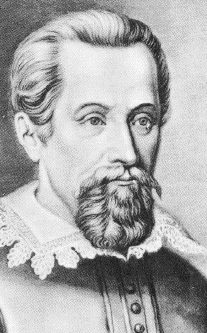

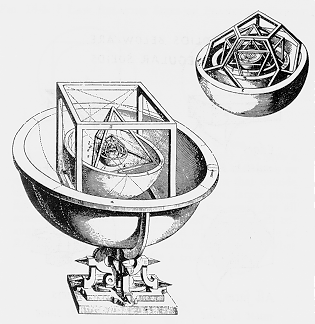
Galileo with the help of their telescopes, which magnified up to 30 times, discovered four moons of Jupiter. The astronomical discovery of Galileo largest contributor to contemporary science was the discovery of Jupiter's satellites. Galileo was the first scientist to discover that there were more satellites beyond the moon (terrestrial). Currently it is known that Jupiter has 16 moons, but Galileo discovered four of these moons: Io, Europa, Ganymede and Callisto.
In January 1610, Galileo observed Jupiter with the help of his telescope (built by himself), and believed that watched three "stars" near Jupiter that were aligned with the planet in order to form a line. The other day it seemed to him that the "stars" had moved in the wrong direction. He continued to observe Jupiter and the "stars". On 11 January a fourth "star" appeared ( the satellite would be Ganymede ) . He continued to observe these objects and found that never left the vicinity of the planet and who accompanied his translation movement. Finally came to the conclusion that he observed were not stars, as though before, but planetary bodies orbiting Jupiter.
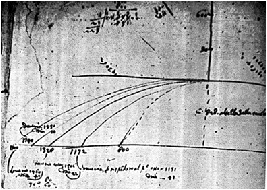
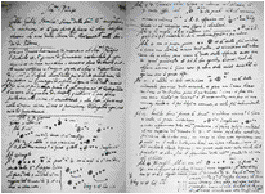
Simon Marius claimed the discovery of Jupiter's moons. According to what he said, it was discovered that in November 1609 (about 5 weeks before Galileo) but only started to record their observations in January 1610 ( at about the same time as Galileo ). However, Marius did not publish their comments as soon as made the discovery, unlike Galileo, and therefore impossible to know the truth of his statement. Galileo is often considered the discoverer. Galileo gave names to the satellites (soon forgotten the time) which also had numbers, which created much confusion as they were being discovered new satellites. Simon Marius, based on Joahannes Kepler suggestions, gave other names to the satellites were and those who persisted: Ganymede, Io, Europa and Callisto.
Simon MariusThe discovery of Jupiter's moons has caused people to begin to believe in the heliocentric theory. Once you have published the book "Sinderus Nuncius" continued to observe the heavens, especially the planets, hoping to make new discoveries. In July 1610, at the time Saturn was brighter; Galileo decided to observe it and made a new discovery. Galileo discovered that Saturn was not one star but three stars that were almost touching and never moved relative to each other; the middle was three times higher than the tips. Galileo did not intend to publish their new discovery in his new book. So he used a method that would guarantee that no scientist claimed the discovery of these stars: Distributed an anagram by the scientific community - "smaismrmilmepoetaleum ibunenugttauiras". Others would know that he had made a discovery and the date it but would not know what had been discovered before him deliver the solution. Later sent the anagram solution - "altissimum planetam tergeninum observi - which meant: "I have found the highest three-way planet". In December 1612 Galileo noted that the two bodies around the star had disappeared later the bodies they reappeared. Galileo could find no explanation.
Drawing published by GalileoIn 1616 it announced that it had seen Saturn otherwise, and in 1616 published his book "Asayer" the way observed. Other scientists have studied the planet and saw it as Galileo had first seen. In 1659 Christiaan Huygens explained what appeared to be three bodies but was of one planet with a thin layer of rings. Galileo also observed the moon, especially its dark spots. Found that the size of the spots and the line that divided the illuminated part of that that was not varied with the angle of sunlight.
Moon phases Galileo concluded that the black spots were shadows and the lunar surface had hills and valleys. The moon was not a perfect sphere but an irregular sphere. Galileo was not the only observer of the moon. Thomas Harriot made the first telescopic representation of the moon, but their designs were not published. He wanted to make a series of representations showing the changing phases of the moon. Probably I wanted to show how the shadows changed with the lighting. He gave up his project because it was too expensive and would be very difficult to get people to believe in his theories. Galileo also observed Venus and discovered that he had phases like the moon.
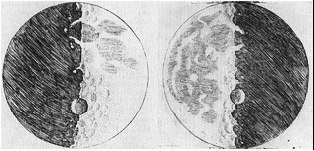
Galileo, based on studies of Archimedes, came to the conclusion that the vacuum objects fall in free fall. Aristotle had a different idea: he thought that if the mass were different, the acceleration of the objects would be, too. Galileo thought that if two objects with different weights fall from the same height at the same time in the vacuum would reach the ground at the same time. He made several experiments and demonstrations. One drop was two bodies of different mass from the top of the Tower of Pisa - the bodies arrived at practically the same time, because although they were not in vacuum, had similar amounts and thus offered more or less the same air resistance. Another demonstration was taking the air inside a glass tube .It start a pen and notes the value of the acceleration. Then, it is the same but with a gold coin and it turns out that the acceleration of the pen and currencies are equal. Galileo produced several theorems. One was: "The spaces covered by a falling body from the home, with uniformly accelerated motion are to each other as the squares of the intervals-time employed in the course of these distances".
[ AB ] represents the distance that an object has come in T seconds[AC ] represents the distance that an object has come t seconds
AB _ t²
AC ¯ t’²
Obs.: The current theory of falling objects is equal to Galileo.
The pendulum LawWhen hung an object in a fixed rope and pulled it slightly, the object is swinging up and down. We call these oscillations movements or vibrations in which an object moves repeatedly. When a weight is suspended from a rope and pulled to one side will be swinging from side to side in a regular way. This move is also an oscillation, called pendulum. It provides a method of marking time because their oscillations are very regular, because not lose hardly any energy as heat. The frequency, which is the number of times that a particular pendulum is swinging every second, is constant since the oscillation is small.
The Parable
Before Galileo discover the parable everyone including the Church, Aristotle accepted the theory. The theory of Aristotle was simple: when a cannonball was fired into the air two forces acted on it. The vertical (gravity) and horizontal (explosive force).
The Theory of Aristotle Now, Aristotle thought that these forces acted separately, that is, the bullet was fired by the driving force ( the explosion ) last. Shortly thereafter, the force of gravity act and the bullet fall straight. But Galileo, after many observations, found that the two forces were active simultaneously, concluding that the bullet path would be formed by two straight lines but by a curved line called parable. The greater use of Galileo's discovery of the parable was undoubtedly in military science - the scientific bombardment. It enabled the military to calculate the distance of the bullets fired by cannon angle with the horizon. The greater use of Galileo's discovery of the parable was undoubtedly in military science - the scientific bombardment. It enabled the military to calculate the distance of the bullets fired by cannon angle with the horizon. Galileo's main moments of life: 1.564: On February 15, born in Pisa - Italy.1.575 -1.577: Years studying in the city of Florence - Italy.
1.581 - 1.585: Returns to Pisa, studying medicine, but does not complete the course. In 1.584 he began his studies of mathematics. In 1.585 leaves the university without completing the course, and without obtaining degree.
1.589 – 1.592: Becomes professor of mathematics at Pisa, his homeland.
1.592 – 1.610: Occupying the chair of mathematics at the "Studio de Padua", conducts various studies and experiments on the bodies fall problem and invented several instruments. In 1600 is published the Mysterium Kepler Cosmographicum - Condemnation and death of Giordano Bruno. In 1607 writes the Defense against Slander and Impostures of Baldesar Capra. In 1609 improves the telescope.
1.610: Publishes the Sidereus Nuncius ( Messenger of the Stars ) , a work that had a great repercussion in Europe. In it, Galileo announces the results of their observations sound the telescope, saying for example, the existence of mountains on the Moon and four satellites around Jupiter. Returns to Florence.
1.610 – 1.632: He goes with his astronomical observations, discussing intensively with their opponents. It is open to criticism Aristotelian physics and Ptolemaic system. In 1.612 publishes Discourse on the things that are on Water and History and Statements on Sunspots. The Dominican Lorini denounces the Copernican doctrine as heretical. In 1.615 Lorini points Galileo to the Holy Office? Galileo receives, in 1.616, a formal warning of the Inquisition, which condemns the theories about the movement of the Earth and prohibits the teaching of the heliocentric system of Copernicus. This year, writes the Discourse on the flow and the Mar. reflux is called to testify before the Cardinal Bellarmine. A decree of the Sacred Congregation of the Index forbade the teaching of Copernicus. Galileo returns to Florence in June.
1.623: Starts Dialogue Concerning the Two Greatest Systems of the World.
1.632: Publishes in Florence the Dialogo sopra i due massimi sistemi del mondo ( Dialogue Concerning the Two Major World Systems ) in February , again criticizing the Aristotelian system and advocating Copernicus. Five months later, the book is forbidden by the Catholic Church. In October, commanded to perform in Rome.
1.633: It begins on April 12 the trial of Galileo. On June 22, the scientist is forced to recant his beliefs. Sentenced to false imprisonment, goes to Arcetri and resumes his mechanics studies.
1.638: After several frustrated attempts, are published in the Netherlands, the Discourse on Two New Sciences, written in prison. Galileo is now completely blind, but follows their investigations.
1.642: On January 18, Galileo dies in Arcetri, 78 years old.
![]()
JUPITER LINKS
Radio-Sky Jupiter Noise Storm Predictions
A Panoramic View of the Big Dipole Array at the UFRO
Windward Community College Radio Observatory -
Realtime streaming decametric audio and Radio-SkyPipe stripcharts.
Voyager Planetary Science Info (Great for Teachers).
University of Florida Radio Observatory Jupiter sound files and prediction tables.
Advice from the Univ. of Florida about receiving Jupiter.
JPL Radio Observation of Comet Shoemaker-Levy press release.
Another Jupiter recording, and info at a John Kraus site.
Low frequency Jupiter emissions, recorded by the Ulysses probe. Great graphic!
Nancay Jupiter Observatory in France Real-time Spectrographic Display
(Reproduction of the text above is authorized provided the holder is preserved and mentioned - All rights reserved - PY4SM - PY2DD)
![]()